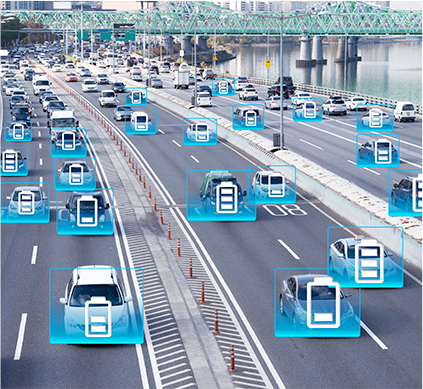

R&D Consulting for Automotive Sector
In-Vehicle Architecture•
Autonomous Driving•V2X connected system
In-Vehicle Architecture•Autonomous Driving•V2X connected system
Almost all of the vehicles have been so far composed of decentralized control architecture, which functions in safety, infotainment, powertrain, and drivetrain domains In the middle of the 2020s, the E/E architecture will shift to centralized composition, which will be connected with every domain and be handled with the integrated control in order to deal with a wide range of transportation/travel/location/charging services and manage with electrified components.

BEV • Electrification of Vehicle
Charging System
While aggressive regulations on exhaust gas emission and the sales prohibition on ICE and HEV have been spreading in many countries, the sales proportion of BEV to other vehicles is rising and the development of new BEV platforms is becoming active in the automobile market. Some growing trends we see in particular are as follows:
- Integrations of PCU or eAxle composed of motors, inverters, reducers/gear boxes or transmission with BEVs and HEVs
- Integrations of AC/DC-OBC with high-/low-voltage DC/DC converters, and modularizations of DC/DC boost converter following a trend of heightening battery voltage capacity from 400V to 800V
- Modularizations of charging-related and inverter-related functionalities

HMI System
On-board HMI is gradually upgrading its technology, triggered by the evolution of ADAS/AD driving and the increasing usage of smartphones and the apps in vehicles. A system that switches over the mode of communications via HMI into the most optimal one according to a surrounding situation is being developed. This system tracts driver’s line of sight and behavior, and in the future, such phycological aspects as fatigue and stress level in driving will also become measurable. Information recognized by safety-related sensors and V2I located hundreds of meters away from a vehicle is conveyed to drivers by HUD or voice and drivers are informed about the status of between hundreds of meters and a couple of kilometers away through a car navigation system, CID, and/or voice.

Functional Material • Multi-Material System
Structural materials for automotive white-body are gradually becoming multi—in addition to the combination of high-tensional steel with aluminum, plastic-based hybrid materials are also increasingly applied. This is true in particular for the BEVs whose weight tends to increase because of their battery and other E-components. For the BEVs equipped with advanced automated/autonomous driving systems, the use of such multi materials is being considered for lowering the weight, and for absorbing/distributing wide range of collision energy.




